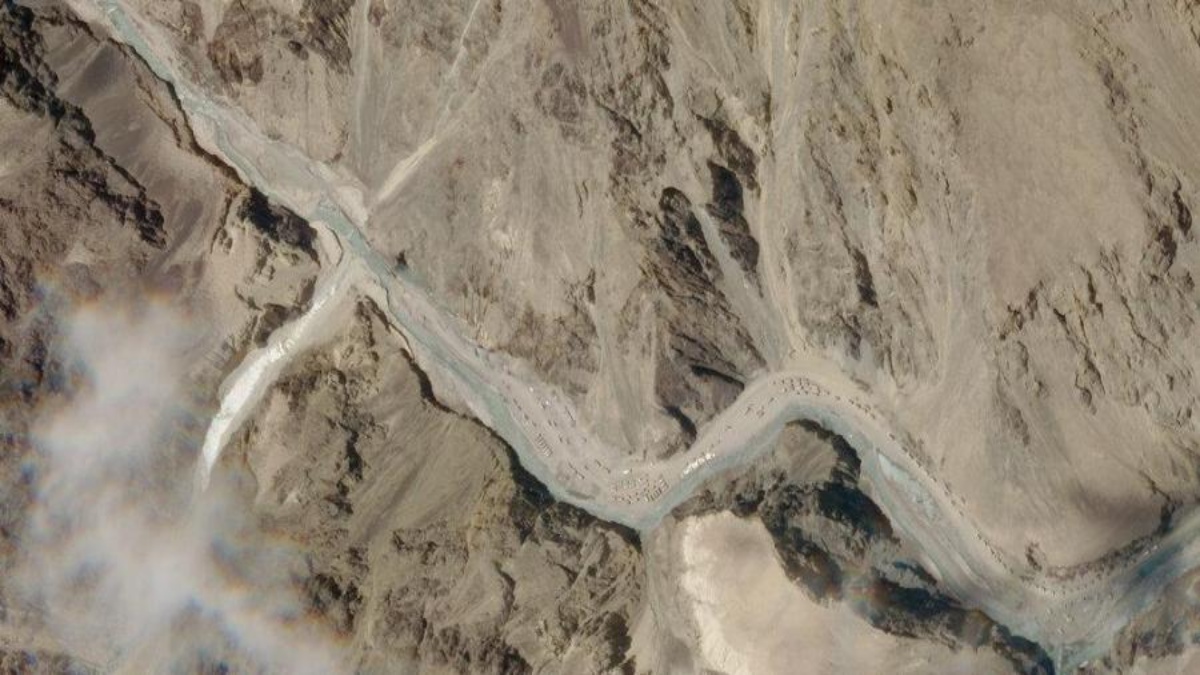


After months of denial over casualties in the Galwan Valley clash with India, China on Friday revealed for the first time since June 2020 the names and details of its four soldiers who were killed.
The revelation was shared on the Twitter handle of Global Times. “China on Friday unveiled, for the first time, names and detailed stories of four martyrs who sacrificed their lives in the border confrontation with India in the Galwan Valley in June 2020, to commemorate their sacrifice for defending national sovereignty and territory,” said the tweet.
People’s Daily, China too shared the information about the four Chinese soldiers killed in the border conflict who were awarded honorary titles and first-class merit citations. “Four Chinese soldiers, who were sacrificed in last June’s border conflict, were posthumously awarded honorary titles and first-class merit citations, Central Military Commission announced Friday. A colonel, who led them and seriously injured, was conferred with honorary title,” it tweeted.
A new video was also uploaded on Twitter by Chinese state media, which showed dozens of Indian and Chinese soldiers in last year’s border faceoff in the Galwan Valley. The video came after China officially acknowledged that it had also suffered casualties in the violent faceoff and named the four slain officers and soldiers.
The Chinese state media video—which is being seen as an attempt at propaganda—shows a large group of soldiers from both sides crossing a river in biting cold and meeting on the rocky banks, where some of them are seen pushing each other to go back. As night falls, soldiers from both sides are seen with flashlights, batons and shields standing on the edge of a cliff. There is much shouting in the dark.
A tweet by Chinese state media analyst Shen Shiwei has alleged that Indian troops had “trespassed into Chinese side”.
Twenty Indian soldiers had laid their lives in the Galwan Valley clash last June. While India believes over 30 Chinese soldiers were killed in the conflict, earlier in February, Russian news agency TASS claimed that 45 Chinese soldiers were killed.
India and China have been in a standoff in eastern Ladakh along the Line of Actual Control (LAC), following aggressive border skirmishes by the Chinese army. The Galwan Valley clash between dozens of soldiers of India and China took place when Chinese soldiers prevented Indian soldiers from marching up to their traditional patrolling point in the area, which had also seen clashes in the 1962 Sino-Indian War.
However, in a major development, both countries have reached an agreement to disengage their troops from the northern and southern banks of the contentious Pangong Lake. Defence Minister Rajnath Singh on Thursday informed the Rajya Sabha that the Chinese troops would move back to the east of Finger 8 while the Indian side would go to its Dhan Singh Thapa post near Finger 3.
Top military officers of both sides are scheduled to meet to discuss further disengagement.
Talks on disengagement from 3 friction points today
As the disengagement of troops has been fully completed along the southern and northern banks of the Pangong Lake, India and China will discuss disengagement from three friction points in eastern Ladakh, including Gogra, Hot Springs and Depsang plains, in the Corps Commander level talks scheduled on Saturday.
According to Army sources, India and China are set to hold the 10th round of Corps Commander level talks at 10 am on Saturday on the Chinese side of the Line of Actual Control (LAC) in Moldo. Meanwhile, Indian troops have moved to their depth locations after disengagement.
The disengagement of troops of the Indian Army and China’s People’s Liberation Army from the LAC was reached after sustained negotiations at the military and diplomatic level, said the Ministry of External Affairs (MEA) last week.
“This agreement was reached after several rounds of sustained negotiations at the military and diplomatic level,” MEA spokesperson Anurag Srivastava said in a press briefing, further adding that the next steps post disengagement has been “clearly spelt out” by Defence Minister Rajnath Singh during his speech in Parliament.
“India’s strategy and approach during disengagement talks with China are based on the directions of Prime Minister Narendra Modi that we will not allow an inch of our territory to be taken by anyone. It is a result of our firm resolve that we have reached the situation of an agreement,” the Defence Minister had said.
The MEA spokesperson informed further that no date has been set for the Working Mechanism for Consultation and Coordination on India-China Border Affairs.